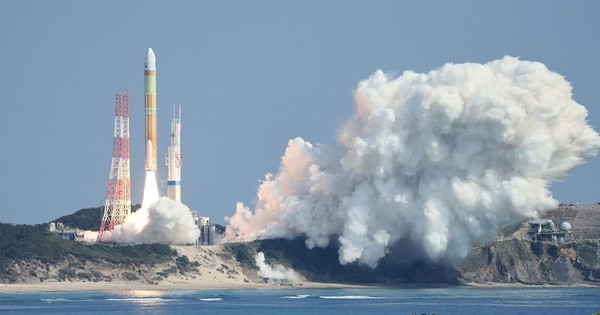Elon Musk’s ambition to take the throne from SpaceX met obstacles: Japan “wept” when it had to self-destruct rockets and plunge straight into the sea because of the incident.
- Tram Ho
The Japanese Aerospace Agency (JAXA) ordered the rocket to self-destruct and fall into the ocean after the engine on the second stage failed to work. The order to self-destruct was sent to the spacecraft about 19 minutes after it took off from the Tanegashima Space Center in southwestern Japan. The ship crashed into the sea off the Philippines with the satellite it was carrying.
The newest rocket, named H3, is 63m high, developed by Mitsubishi Heavy Industries Ltd. make. It represents Japan’s latest attempt to catch up from growing demand in the aerospace industry. The failure of the launch, however, dealt a blow to the world’s third-largest economy’s ambitions to catch up with billionaire Elon Musk’s private spaceflight company SpaceX.
In 2015, SpaceX successfully launched and landed a Falcon rocket – a reusable rocket. H3 also aims to make launch prices more competitive. However, only the large parts of the rocket are reusable. The main god part will only be used once.

JAXA President Hiroshi Yamakawa said: “ It is our responsibility to find the root cause of the incident and restore people’s confidence in Japan’s rocket industry. H3 is crucial to Japan’s space ambitions .”
A dedicated team has been established to investigate the cause of the incident. JAXA said it has no plans to recover the crashed engine part.
Mitsubishi Heavy has been working on the development of the H3 rocket for more than a decade. The previously planned launch was aborted after it was discovered that a malfunction in the main propulsion system prevented the ignition signal from reaching the required part. The incident sent shares of Mitsubishi Heavy down 1%.
The H3 rocket, developed to replace the H2-A, was first introduced in 2001 as a representation of Japan’s space ambitions. Japan also plans to send six satellites into space each year for the next two decades.
For a long time, the main obstacle to rocket launches was the price, which amounted to $90 million per launch. Despite the similar payload, the H2-A costs $23 million more to launch than SpaceX’s Falcon 9. However, H3 will be a turning point with a launch cost of only $ 50 million, $ 17 million cheaper than SpaceX. Therefore, this will be the perfect solution for Japan to compete with Elon Musk’s company in the industry that will generate $386 billion in 2021.
” We sincerely apologize to those who watched, loved or participated in the development and launch of H3 ,” Yamakawa said at a press conference after the launch failure.
Reference: Bloomberg
Source : Genk
